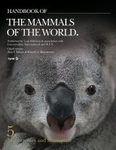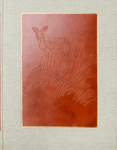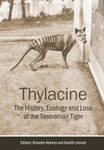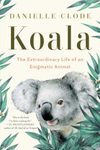![Comparative Morphology of the Internal Nasal Skeleton of Adult Marsupials Based on X-Ray Computed Tomography Comparative Morphology of the Internal Nasal Skeleton of Adult Marsupials Based on X-Ray Computed Tomography]()
Click to have a closer look
About this book
Related titles
About this book
The internal skeleton of the nasal cavity is sporadically and often incompletely described for many marsupial species and mammals in general. Here, I provide an anatomical survey of the ethmoid in the skulls of adult marsupials based on examination of computed tomography (CT) imagery of 29 taxa representing all the major extant groups of marsupials. This survey resulted in a description of the “generalized condition” for the morphology of the marsupial ethmoid bone, ossified nasal septum, and associated structures of the interior of the nasal cavity. I also described how the ethmoid in different clades varies in morphology from the general condition for Marsupialia. Intraspecific variation of the ethmoid was described based on a sample of 18 specimens of Monodelphis domestica, the gray short-tailed opossum, and asymmetries within a single specimen are documented for other taxa. For the most part I follow the nomenclature of previous nasal cavity workers, but I also provide explicit definitions of all the terms used and some of the common synonyms for these in the literature. Endoturbinals and ectoturbinals are numbered sequentially following the work of previous authors, because of the issues with serial homology for these elements.
The number of elements of the marsupial ethmoid is fairly conserved with the typical and likely ancestral condition being the presence of an ossified maxilloturbinal, nasoturbinal, two ectoturbinals, and five endoturbinals. However, there is considerable variation in the complexity, spatial placement, and overall morphology of the bony internal skeleton of the nose. Based on this descriptive work, I documented 35 discrete characters from the ethmoid and ossified nasal septum complex in marsupials. These characters were scored for this sample of marsupials and five mammalian outgroups. Examination of these characters on preexisting topologies of marsupial relationships revealed some phylogenetic signal for this sample of marsupial species. Three of the characters are punitively diagnostic for previously recognized clades within Marsupialia. It is possible that when this matrix is combined with morphological data from other anatomical systems and molecular data that previously unrecognized or controversial clades within Marsupialia may be supported. Even so, the relatively little amount of phylogenetic signal from my character matrix prompted me to search for alternative explanations for mechanisms driving the variation in this anatomical system. Consequently, I compared ecological data with the number of ecto- and endoturbinals as a preliminary test to determine whether some of the interspecific variation in the osteology of the ethmoid is a result of ecological factors, but found few correlations to support this idea.
Finally, my study highlights some issues with homologies of mammalian nasal cavity elements that need to be resolved and reexamined. These include whether the ossified nasal septum arises from the presphenoid or the mesethmoid, and a test of the current view of serial homology of the endoturbinals and ectoturbinals.
Customer Reviews










































